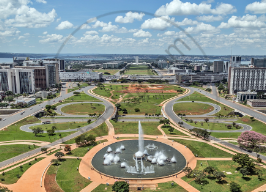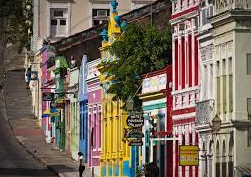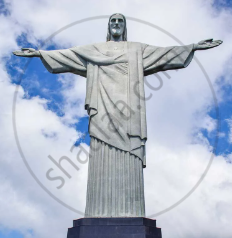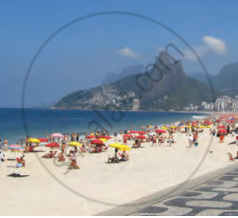Topics
Field Visit
Location and Extent
Physiography and Drainage
- Physical Divisions of India
- The North Indian Mountains
- The Himalayas
- North Indian Plains
- The Peninsular Indian Plateau
- The Indian Coastal Plains
- The Indian Islands
- Physiography of Brazil
- Brazilian Highlands
- The Great Escarpment in Brazil
- Coastline of Brazil
- Brazilian Plains
- Brazilian Island
- Drainage of Brazil
- Drainage Systems of India
- Himalayan Rivers
- Peninsular Rivers
Climate
Natural Vegetation and Wildlife
Population
Human Settlements
Economy and Occupations
Tourism, Transport and Communication
Geography - Physical Divisions of India
Identification of Physical divisions
- Identification of Physical Divisions
Geography - North Indian Mountains
Himalayas
Associated mountains
- Concept of Associated Mountains
Geography - North Indian Plain Region
Deserts
- Desert
Western Plains
- Concept of Western Plains
Central Plains
- Concept on Central Plains
Delta region
- Concept of Delta Region
Eastern Plains
- Concept of Eastern Plains
Geography - Peninsular Plateau Region
Chhotta Nagpur Plateau
- Concept for Chhotta Nagpur Plateau
Malwa Plateau
- Concept on Malwa Plateau
Maharashtra Plateau
- Concept for Maharashtra Plateau
Karnataka Plateau
- Concept for Karnataka Plateau
Telangana Plateau
- Concept for Telangana Plateau
Geography - Western Ghats and Eastern Ghats
Eastern Ghats
- Concept on Eastern Ghats
Sahyadries
- Concept on Sahyadries
Geography - Coastal Region
- Geography - Coastal Region
Eastern coastal plain
- Coastal Region - Eastern Coastal Plain
- Concept for Western Coastal Plain
Western coastal plain
- Concept for Western Coastal Plain
Geography - Indian Islands
- Geography - Indian Islands
Eastern Islands
- Indian Islands - Eastern Islands
Western Islands
- Indian Islands - Western Islands
Geography - Practical 1
Cartography
- Concept on Cartography
Geography - Practical 2
Two dimensional diagrams
- Two Dimensional Shapes
One dimensional diagrams
- Concept on One Dimensional Diagrams
Economics - Introduction of an Economy
Introduction of an Economy
- Economy
- Types of Economy
- Main Features of Economy
Economics - Basic problems of an economy solution
Solutions
- Concept for Capitalism
- Concept for Socialism
- Mixed Economy
Problems
- Introduction of Basic Problems of an Economy
- Problems- for Whom to Produce
- Problem - How Much to Produce
- Problem - by Whom to Produce
Economics - Inflation
Introduction
- Introduction of Inflation
Effects of inflation
- Effects of Inflation
Measures of Inflation
- Measures of Inflation
Causes of inflation
- Causes of Inflation
Economics - Public distribution system and consumer protection
- Measures of Inflation
Public Distribution system - meaning and explanation
- Public Distribution System - Meaning and Explanation
Introduction
- Introduction of Public Distribution System and Consumer Protection
Objectives of Public Distribution system
- Objectives of Public Distribution System
Remedial Measures
- Remedial Measures Public Distribution System and Consumer Protection
Consumer Protection
- Consumer Protection - Rights and Duties of Cunsumer, Food Adulteration
Drawbacks of Public Distribution system
- Drawbacks of Public Distribution System
Progress of Public Distribution system
- Progress of Public Distribution System
Notes
Tourism in Brazil:
- Brazil is the second most popular international tourist destination in South America, beating only Argentina.
- In the year 2000, The country had a steep tourism rate. The tourism industry suffered a setback between 2006 and 2008, but the economy recovered after 2010.
- Tourism is a growing industry in Brazil that is critical to the economies of several Brazilian regions.
1. Factors/Characteristics responsible for tourist attraction:
- Brazil has several natural and cultural treasures considered world’s patrimony by UNESCO. Brazil has 22 sites of cultural heritage, one site of mixed heritage, and seven sites of natural heritage. These sites have been designated for their exceptional and universal cultural value.
1. Brasilia:
- Braslia was a planned city designed by Lcio Costa, Oscar Niemeyer, and Joaquim Cardozo in 1956 to relocate the capital from Rio de Janeiro to a more central location.
- Because of its modernist architecture and distinctively artistic urban planning. UNESCO designated it as a "City of Design" in October 2017.

Brasilia
2. Historic Centre of Salvador de Bahia:
- Salvador witnessed the blending of European, African, and Amerindian cultures, and it was also the site of the new world's first slave market.
- The city has managed to preserve many outstanding Renaissance buildings, and the brightly coloured houses are a notable feature of the old town.

Salvador de Bahia
3. Rio de Janeiro:
- The site consists of an exceptional urban setting that encompasses the key natural elements that have shaped and inspired the city's development: from the highest points of the Tijuca National Park's mountains down to the sea.
- Rio de Janeiro is also known for providing musicians, landscapers, and urbanites with artistic inspiration.

Rio de Janeiro
- Due to the abundance of natural resources in the country, ecotourism is being promoted with the help of local residents.
4. Beach:
- The majority of beaches in Brazil are clean, with white sand beaches, a beautiful sea coast and islands, and orchards that attract tourists.

Beach at Rio De Janeiro
5. Central Amazon Conservation Complex:
- The Central Amazon is the largest protected area in the Amazon Basin and one of the world's most biodiverse regions.
- The site protects critically endangered species such as the black caiman and two species of river dolphins.

Amazon Basin
- Brazil’s cultural integrity and natural beauty are not the only factors that draw tourists. Brazil is also a very popular business destination. Many MNCs have their headquarters in Brazil.
2. Comparison of India and Brazil tourism:
|
Tourism and economy (2016) |
- In 2015, the number of international tourists visiting India exceeded that of Brazil. Despite this, the tourism sector's contribution to GDP is lower than that of Brazil. Apart from that, the proportion of the Indian population engaged in tourism is higher than that of Brazil.
- This is primarily determined by the population size and GDP size of those countries.
- According to this, India's population outnumbers Brazil's, as does its GDP. Because India's GDP and population are higher than those of Brazil, the contribution of tourism to GDP appears to be lower in India while population engagement appears to be higher.
Example
Answer the questions after reading fig.
- What type of graph is shown here?
- What does the graph show?
- Which country’s tourism has a larger shar in the contribution towards GDP?
- Which country has a larger population engaged in tourism sector but contributes lesser in GDP?

- The graph depicted is a double bar diagram depicting the tourism industry in India and Brazil. It depicts the percentage of the population engaged in tourism and its contribution to GDP in both countries.
- The graph depicted is a double bar diagram depicting the tourism industry in India and Brazil. It depicts the percentage of the population engaged in tourism and its contribution to GDP in both countries.
- The contribution towards GDP of Brazil is more than that of India. In Brazil, nearly 8% of the population is engaged in the tourism industry. But their contribution to GDP is nearly 10%.
- In India, the population engaged in the tourism industry is much greater than the contribution to GDP. Nearly 10% of the population is engaged in the tourism industry, but their contribution is only 8%.
Example
What are the factors responsible for development of these tourism sites in Brazil?
Tourism is one of the largest growing service industries in Brazil. Tourism rates are rising steeply in Brazil from the 2000s. There was a setback in the tourism industry between 2006 and 2008, but the economy is back on track from then. Today, Brazil is one of the most visited countries in South America.
Brazil's cultural integrity and natural beauty are not the only factors that draw tourists. Brazil is also a very popular business destination. Many MNCs have their headquarters in Brazil. The Amazon River basin and the impenetrable forests, wide beaches and bays in the coast, attractive islands and the innumerable species of flora and fauna makes Brazil an attractive tourist destination. Many places are tagged by the UNESCO as World Heritage Sites. Besides the capital city of Brasilia, cities like Rio-de-Janeiro and Sao Paulo also attract vast tourist traffic. Because of the abundance of natural resources in the country, ecotourism is also being promoted with the participation of local people.
Most of the visitors are from Argentina, the United States and Italy. To promote tourism, tourist VISA requirements have been renounced for many countries including Greece, Italy, Hong Kong, Poland, Turkey and many others. Thus, tourism is a large developing industry in Brazil.
Example
Answer the questions on the basis of figure.
|
Number of International Tourists |
- Which country attracted more international tourists in the year 1995?
- In which country did more international tourists arrive in the year 2000?
- In which year can an increase be seen in the number of international tourists in India?
- What was the number of international tourists in the year 2015 in both the countries? What was the difference between them?
- What could be the reason of increase in tourists in India after the year 2010?
-
India attracted more international tourists in the year 1995.
- More international tourists arrived in Brazil in the year 2000.
- An increase in the number of international tourists in India can be seen from the year 2010.
- The number of international tourists in India in 2015 was approximately 130 lakhs. The number of international tourists in Brazil in 2015 was 60 lakhs. The difference between India and Brazil in the numbers of international tourists in 2015 was 70 lakh people. (130 lakhs – 60 lakhs).
-
There is an increase in tourists coming to India after 2010 because :
Different types of tourism like eco-tourism, health tourism, business tourism, etc. have been promoted by the Indian Government. The quality of travel and stay in India has also improved.
Related QuestionsVIEW ALL [11]
Answer the questions on the basis of figure.
|
Number of International Tourists |
- Which country attracted more international tourists in the year 1995?
- In which country did more international tourists arrive in the year 2000?
- In which year can an increase be seen in the number of international tourists in India?
- What was the number of international tourists in the year 2015 in both the countries? What was the difference between them?
- What could be the reason of increase in tourists in India after the year 2010?


